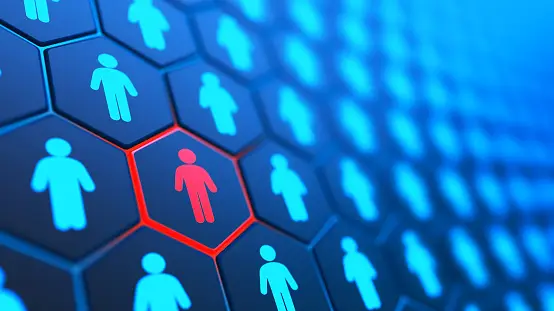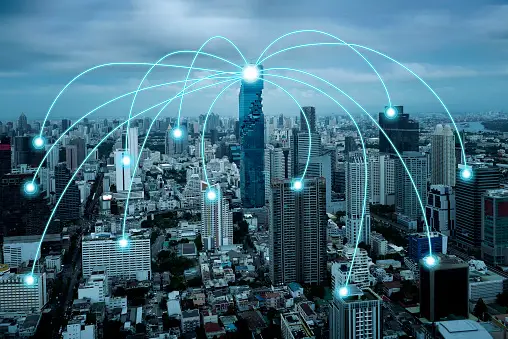Explore the fascinating journey of global information exchange in our detailed article, “Unveiling the Magic: How Does Information Travel Across the Globe?” Dive into the internet’s infrastructure, data protocols, and future technologies shaping our interconnected world. Discover the science behind the seamless flow of digital communication.
The Backbone of the Internet
The internet has the appearance of a most distinctive cobweb, distributed and covering the facial of the entire world. Its nucleus comprises of the fiber-optic cables, which act as the highways for moving information from one point to another. These are the cables made of either glass or plastic fibers and convey information with the help of light hence boosting its speed in transmitting information. The undersea cables which are literally cables that lay at the bottom of seas are engineering wonders that link continents and carry most of ’internetwork’ traffic. Overhead, satellites connect those in remote environments where it is impossible to lay down cables for the Internet. These satellites are however pertinent for fulfilling the goal of global inclusiveness so that even the most remote locations of the world can avail the plethora of information that is available on the internet.
Wireless networks fit into this physical infrastructure to offer the end users the last link to the network. Wireless today connect the wired infrastructures to the personal hand-held devices through Wi-Fi and through cellular networks. It is for this reason that we can easily connect using wired or wireless networking increasing the possibility of a continued internet connection at home, the workplace or when in transit. The scale of this infrastructure is probed daily in terms of capacity, as the billions of individuals, businesses, and governments demand high-definition videos, seamless financial transactions and other services, which are demonstrated by the internet’s backbone.
Wireless networks fit into this physical infrastructure to offer the end users the last link to the network. Wireless today connect the wired infrastructures to the personal hand-held devices through Wi-Fi and through cellular networks. It is for this reason that we can easily connect using wired or wireless networking increasing the possibility of a continued internet connection at home, the workplace or when in transit. The scale of this infrastructure is probed daily in terms of capacity, as the billions of individuals, businesses, and governments demand high-definition videos, seamless financial transactions and other services, which are demonstrated by the internet’s backbone.
Data packats And Protocol
When one decides to look at the lowest level of this communication, we find ourselves in envionment that is strictly defined and regulated. Taken literally data packets are datagrams that are messages which are small enough to fit in the network of cables and switches and contain all the information needed to get around the interconnection of the World Wide Web. Imagine every single packet as a postcard with the receiver’s IP address or the destination address and the sender’ IP address or the return address to make sure it is delivered to the right place and in case of any emergencies to trace it back. The transport of such packets is coordinated by protocols like TCP/IP, these establish the manner in which data is transmitted, received and reconstructed from batched packets into a cohesive message at the other end.
It is so fast that routers and switches are the post offices and sorting stations deciding in a split second where to send each packet. Thus, this system is supposed to be redundant, with several options for avoiding the concentration of clients or equipment failures. The net of advancement is a community that is self-repairing and hence can adapt to the unpredictable publicity of Internet traffic, so that our emails, messages, and requests get through with remarkable dependability.
It is so fast that routers and switches are the post offices and sorting stations deciding in a split second where to send each packet. Thus, this system is supposed to be redundant, with several options for avoiding the concentration of clients or equipment failures. The net of advancement is a community that is self-repairing and hence can adapt to the unpredictable publicity of Internet traffic, so that our emails, messages, and requests get through with remarkable dependability.
The Role of Servers and Data Centers
It is worth to consider servers as the obedient employees of the Internet ready to complete a given task. They are ultra fast processors which contain the huge chunks of information that constitute all the websites, applications and services that are in everyday use. Whenever you access a link or a URL address, your request goes through the internet up to the respective server of the information you are looking for. Your request then goes to this server, the server then interprets your request and gets the required data then transmits it back across the network to your device so that you can be able to open a webpage, download a file or be able to watch a video.
Servers are the basic units of computing that spread the work over thousands of kernel and user-space processes; data centers are the fortresses that contain these servers, requiring state-of-the-art cooling, power arrangements, and security to guard such information treasures. They are placed at various regions in the globe with a view of reducing the distance that information has to cover, thus increasing the rate of information conveyance and minimizing the delays. It can range from thousands of square feet up to millions of square feet and is known to draw power needed by a small town. They are the ‘engine’ of cloud, the hardware- the meat and potatoes of the invisible online world we live in.
Servers are the basic units of computing that spread the work over thousands of kernel and user-space processes; data centers are the fortresses that contain these servers, requiring state-of-the-art cooling, power arrangements, and security to guard such information treasures. They are placed at various regions in the globe with a view of reducing the distance that information has to cover, thus increasing the rate of information conveyance and minimizing the delays. It can range from thousands of square feet up to millions of square feet and is known to draw power needed by a small town. They are the ‘engine’ of cloud, the hardware- the meat and potatoes of the invisible online world we live in.
CDNs
These are known as the quiet giant of the internet, the clumsy performers staging us bringing us the content we need in record time. Thus, through replicating the content at certain servers located in various corners of the global net, a CDN cuts down the distance the information has to travel, enhances the speed of its loading, and decreases the utilization of the necessary bandwidth. Whenever you make a request for a particular webpage, the CDN guides you to the nearest server hosting fresh content and hence the information delivered to you is as fresh as it can be ideally without having to surf the www to the source server possibly in another part of the globe.
This system is most valuable for instances which an unusually high amount of traffic is expected, such as during a big event, or when a shared piece of content will start to attract many visitors. CDNs are able to spread the load among various servers which is a positive as one server may be a target for numerous hits and subsequently become flooded leading to the freezing of the server. From a business perspective, this means that the services run more smoothly and thereafter, are dependable for business, whereas for a user, it means that he is able to get the content that he wants in a shorter amount of time. More than ever before, more people are relying on the internet for their information needs, and this is where CDNs come in handy to ensure the internet is fast and easily accessible.
This system is most valuable for instances which an unusually high amount of traffic is expected, such as during a big event, or when a shared piece of content will start to attract many visitors. CDNs are able to spread the load among various servers which is a positive as one server may be a target for numerous hits and subsequently become flooded leading to the freezing of the server. From a business perspective, this means that the services run more smoothly and thereafter, are dependable for business, whereas for a user, it means that he is able to get the content that he wants in a shorter amount of time. More than ever before, more people are relying on the internet for their information needs, and this is where CDNs come in handy to ensure the internet is fast and easily accessible.
Encryption and Security
In the world of electronical communication security comes first. In other words, encryption becomes a protector, which changes information into a format that can only be read using another key form of encryption. It ensures that any information that is private such as; physical characteristics, account numbers, and account balances, messages, and any other information that needs to be kept secure will be safe when it is passing through the public domain. Features such as HTTPs that one may see in the web address bar of the browser provide a sign that website that one is visiting has a secure connection, therefore preventing interceptors from gaining an illegitimate access to the communicated information.
Other related security measures include Virtual Private Networks (VPNs) that expand the security by creating a tunnel through the, otherwise, public Internet. Basically, when you connect a VPN, your data is encrypted from your side until it reaches the VPN server, and your IP address is hidden along with your activities online. This is especially the case given that cyber threats are on the rise and they are likely to get more complex in future. Thus, using encryption and other forms of secure communication, people can retain control over their digital existence and keep the data that is stored in it sacrosanct, private.
While the Human Element Technology maybe the frame work on which information travel will be based, it’s the human element that will put life into it. Network engineers are responsible for designing the enormous communication channels through which our data passes and how they should do so without compromising the flow. Software developers work on the programs we use to INTERFACE us with the digital world: these developers are never content with resting on their laurels. Cybersecurity specialists are onsite always to monitor this ecosystem for the various risks that wish to penetrate and harm the system.
These are professionals who collaborate in ensuring the sustenance and enhancement of the foundation of the wired world. Due to their experience and creativity, the development of the Internet does not stagnate and meets the new needs of users, and future requirements. It is for this reason that they remain committed and innovative in order to keep the magic of information exchange across the world going as well as constantly spur innovation and unite people across continents and cultures.
Other related security measures include Virtual Private Networks (VPNs) that expand the security by creating a tunnel through the, otherwise, public Internet. Basically, when you connect a VPN, your data is encrypted from your side until it reaches the VPN server, and your IP address is hidden along with your activities online. This is especially the case given that cyber threats are on the rise and they are likely to get more complex in future. Thus, using encryption and other forms of secure communication, people can retain control over their digital existence and keep the data that is stored in it sacrosanct, private.
While the Human Element Technology maybe the frame work on which information travel will be based, it’s the human element that will put life into it. Network engineers are responsible for designing the enormous communication channels through which our data passes and how they should do so without compromising the flow. Software developers work on the programs we use to INTERFACE us with the digital world: these developers are never content with resting on their laurels. Cybersecurity specialists are onsite always to monitor this ecosystem for the various risks that wish to penetrate and harm the system.
These are professionals who collaborate in ensuring the sustenance and enhancement of the foundation of the wired world. Due to their experience and creativity, the development of the Internet does not stagnate and meets the new needs of users, and future requirements. It is for this reason that they remain committed and innovative in order to keep the magic of information exchange across the world going as well as constantly spur innovation and unite people across continents and cultures.
Information Travel Trends and Prospects for the Future
Looking at the distant line, one could observe the promising future of the information travel field. Instant communication is fast approaching that could alter the basic principles of data transmission with the help of quantum computing. Based on the phenomenon of quantum entanglement, it means that information could flow between particles in an instant without even the need for distance which in term paves way for a new method of communication. At the same time, 5G networks are on the horizon to improve on what we have in terms of speed, low latency and general availability.
These advancements will enable a new generation of technology across the IoT physical access to billions of devices and virtual/augmented reality. The above technologies, as we incorporate them in our society and daily existence, then the process of sharing and receiving information is bound to assume new dimensions and become more integrated. The miracle of information mobility is not in the fact that some data circulates silently in the world, but it is in the fact that it creates opportunities, opens opportunities and determines the future.
Therefore, the passage of information around the world, is credible evidence of mankind’s accomplishment; a great blend of innovation and ceaseless endeavor. It is process that is reiterated and reinvented by the very people that want to change the world and make it a more connected place. It is very enlightening to discover how information flows and at the same time we are given glimpse of the future of this system.


























